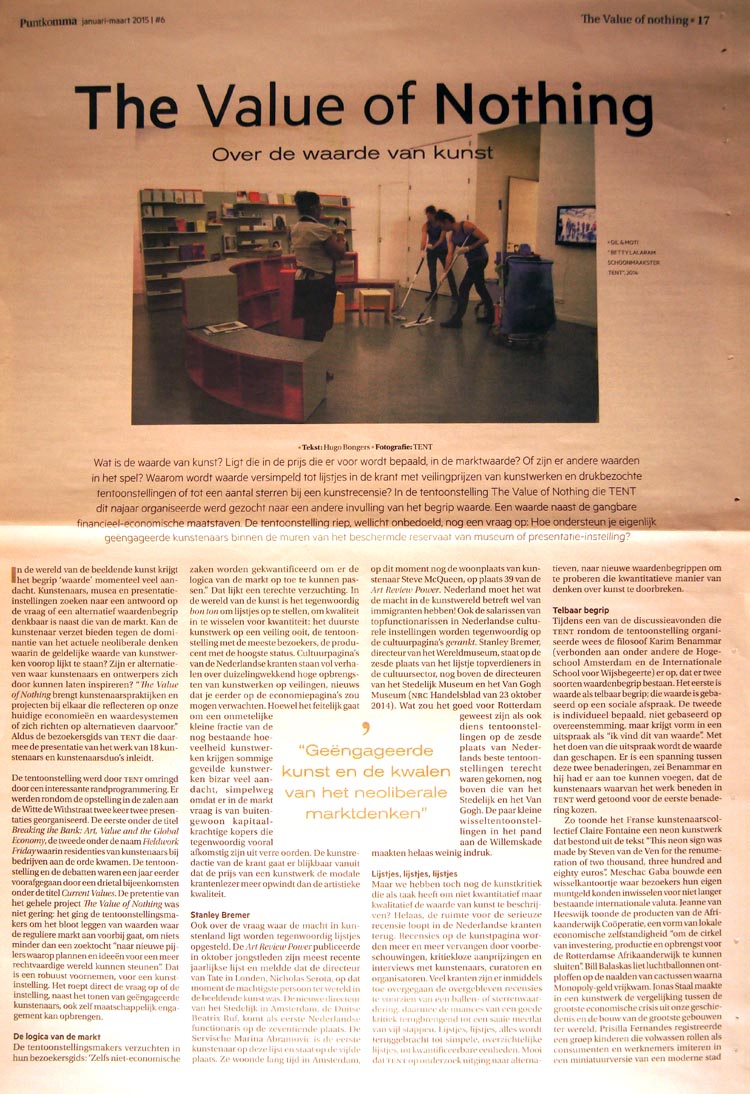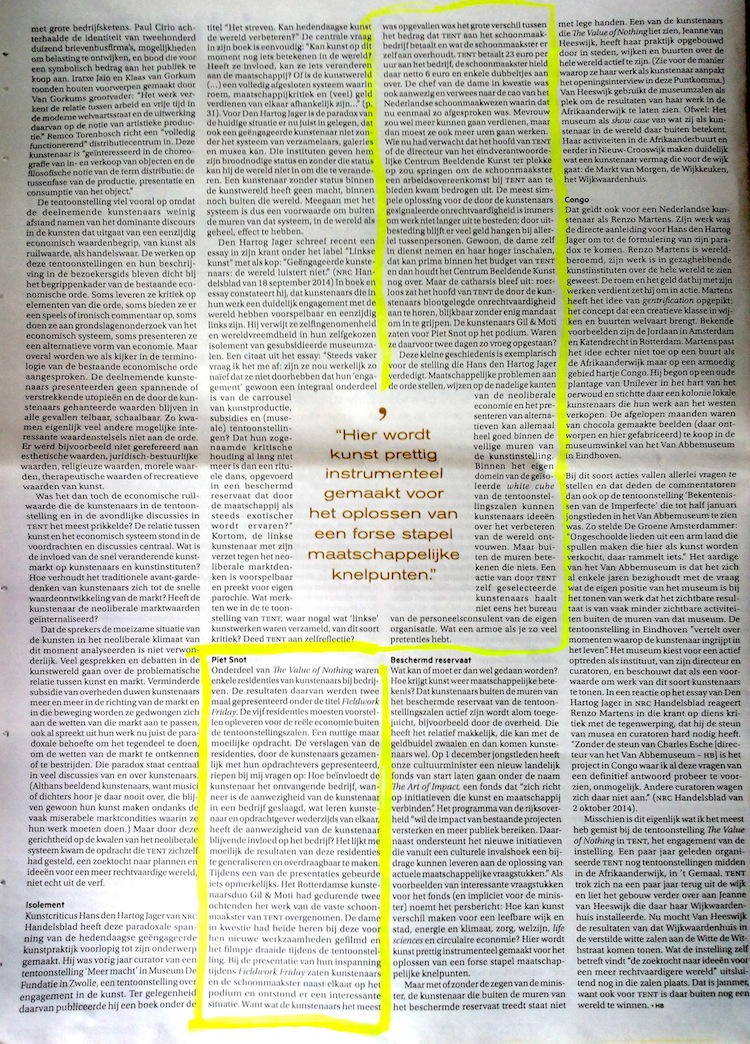Puntkomma #6 , The Netherlands , January- March 2015
The Value of Nothing
Hugo Bongers
English translation: Heleen Schröder
...A few artists’ residencies with companies formed part of The Value of Nothing. The results were presented in two sessions entitled Fieldwork Friday. The five residencies were intended to yield proposals for the real economy outside of the exhibition space. A useful but difficult assignment. The reports on the residencies, presented by the artists in collaboration with their clients, raised some questions: how does the artist influence the receiving company, when is the presence of an artist in a company successful, what do artist and client reciprocally learn from each other, does the presence of the artist have a lasting influence on the company? It seems difficult to generalize the results of these residencies and make them transferable. During one of the presentations something remarkable happened. For two days the Rotterdam artists duo Gil & Moti took over the duties of the regular cleaning lady in TENT. The lady in question filmed the two gentlemen performing their new work, and the short film was screened during the exhibition. During the presentation of their efforts during Fieldwork Friday, the artists and cleaner sat on stage together, and an interesting situation arose. Because what most struck the artists was the large difference between the amount TENT pays the cleaning company and what the cleaner herself earns. TENT pays the company 23 euro per hour, the cleaning lady earned 6 euro and a few cents. The cleaning lady's boss was also present, and referred to the Dutch cleaning industry’s collective labour agreement, in which this arrangement had been settled. The lady would be able to earn more if she would also work more hours. Whoever may have hoped that the head of TENT or the responsible person in question from the Centre of Fine Arts would jump up and offer the woman a labour agreement in TENT, was disappointed. The simplest solution for the injustice identified by the artists would be, after all, to stop outsourcing work; outsourcing causes a lot of money to remain with intermediaries. Simply employing the lady directly and paying her more can easily be accommodated within the TENT budget, and the Centre for Fine Arts would profit. But the catharsis didn't arrive: the head of TENT listened to the exposed injustice without moving a muscle, apparently without any mandate to intervene. The artists Gil & Moti sat on the stage in vain. Is that what they rose for so early for two days?
This little history is exemplary for the thesis defended by Hans den Hartog Jager. Identifying social problems, pointing out the negative sides of the neoliberal economy, and presenting alternatives, are all possible within the safe confines of the art institution. Within the proprietary domain of the isolated white cube of the exhibition spaces, artists can unfold ideas about improving the world. But outside of those walls it has no meaning. An intervention by artists selected by TENT itself does not even reach the human resources manager of the organisation in question. What poverty, if you have such grand pretentions...

